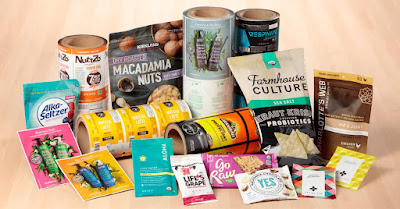Search This Blog
Leading printing and packaging business Fareed Printers and Packages is renowned for its dedication to excellence and innovation. Fareed Printers and Packages produces outstanding results with an emphasis on accuracy and attention to detail, using cutting-edge technology and talented staff to create everything from corporate branding materials to product packaging designs.
Featured
- Get link
- X
- Other Apps
Uses And Benefits Of Choosing Flexible Packaging Films
Flexible packaging is one of the fastest-growing areas of the packaging industry. Compared to several traditional packaging alternatives flexible packaging is greener and gives more value for money.
Flexible packaging film consists of optimum quality materials and plays its role effectively as well as consistently all through the life cycle of the products. It leverages flexible substrates including paper as well as plastic films. Its rising popularity is driven by superior properties including transparency, twist retention, and superior shrinkage.
Superior Technology
One example of flexible packaging is stand-up pouch bags. The latter is manufactured from multiple layers of plastic, aluminum as well as other materials. The advantage of stand-up pouches is that they protect food products from environmental as well as physical hazards encountered in the stages of transport and storage. Flexible food packaging can have multiple designs to attract buyers. Zip locks and spouts can be added for better convenience and usability.
Reduced Costs
By opting for flexible packaging manufacturing costs are considerably reduced. The flexible packaging material is manufactured by laminating together multiple layers of films. The time, energy, and material expenses expended for manufacturing flexible packaging films are much lower than those of traditional glass and plastic jars.
Flexible packaging films are designed to do the following
- Make the outer packing more resistant to tearing
- Shield the contents during the stages of packaging, distribution as well as storage
- Shield the contents from external deteriorating agents such as light, moisture, and gas.
- Retain the qualities of content including freshness and aroma.
Uses for food products include
- Ready-to-eat food including snacks, ice creams, and beverages
- Freezer to microwave
- Boil in bag pouches
Uses for non-food items are
- Insulation
- Pharmaceuticals
- Cosmetics
Uses of Flexible Packaging Films
- LDPE films are used to package rice and miscellaneous edible products. The former is frequently employed to package electronic components.
- Laminated aluminum foil bags are used for tablet packaging, facial masks, IC board packaging, and other applications.
- Laminated bags with one-way valves. Common uses include all kinds of powders, pet food, and others.
- Retort pouches are used to package seasonings, sauces, meat products, and other edible preparations.
- Standard laminated bags and pouches are used to package products in the domain of food, pharmaceuticals, and cosmetics.
- Stand-up zipper pouches are popular for packing pet food, confectionary goods, milk powder, and others.
- Vacuum-pack bags and pouches find use in seafood, frozen prepared food items, and more.
- Get link
- X
- Other Apps
Comments
Popular Posts
Unlocking the Power of Food Packaging: Enhancing Safety, Convenience, and Sustainability
- Get link
- X
- Other Apps
Elevating Brand Appeal: The Art of Packaging and Labeling
- Get link
- X
- Other Apps







very informative
ReplyDelete